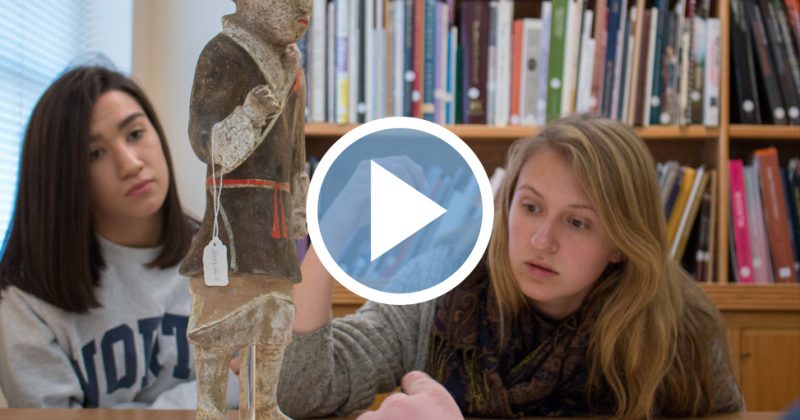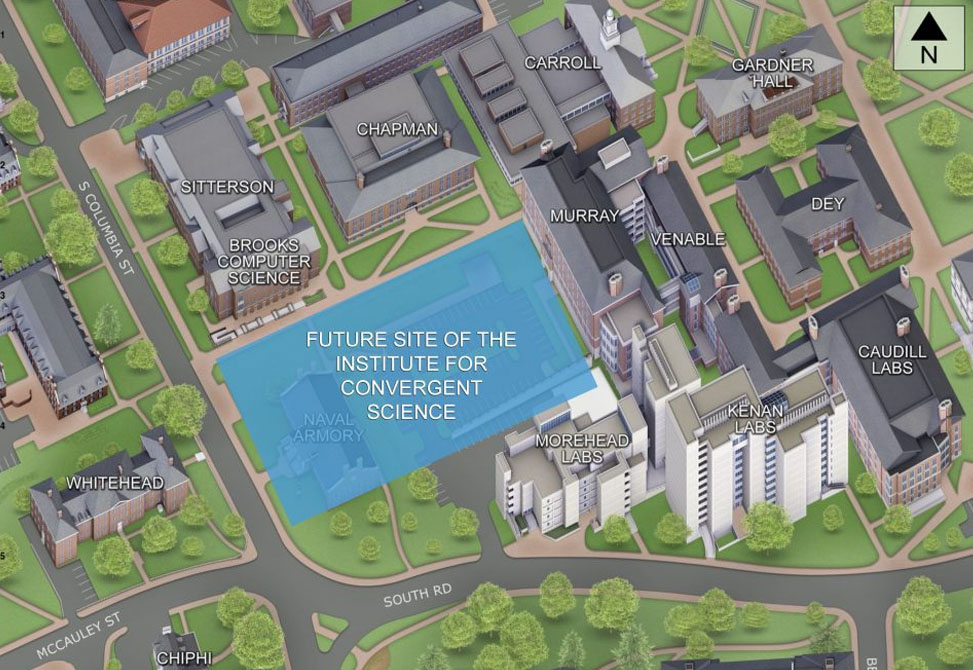
The building that will house the Institute for Convergent Science will sit at the corner of Columbia Street and South Road, within the area indicated by the blue box.
In fall 2017, UNC-Chapel Hill announced, as part of the kickoff of the Campaign for Carolina, that it was creating the UNC Institute for Convergent Science. With a feasibility plan completed and a collaborative innovation framework being developed and tested, the institute and the building that will house it are several steps closer to reality.
By embracing this emerging model for scientific research, Carolina aims to tackle the world’s biggest problems by fostering greater collaboration among researchers, students and entrepreneurs across disciplines to speed the application of new discoveries and the commercialization of technological breakthroughs. The institute will engage faculty and students across several schools at Carolina and draw upon the resources and expertise of the university’s Office of Technology Commercialization, Innovate Carolina and UNC Research.
“Convergent science is a problem-centered approach to research,” said Chris Clemens, senior associate dean for natural sciences in the College of Arts & Sciences. “You start by framing an interesting problem or challenge you want to solve — such as how to generate or store energy more effectively — and then you build the team you need to make the most impact.”
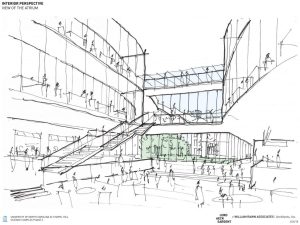
Convergent science is not a new concept for the University; this team-based approach to addressing complex problems dates back decades at Carolina, and several College departments have been convergence leaders, including chemistry, applied physical sciences, mathematics, psychology and neuroscience, physics and astronomy, and biomedical engineering. But the construction of a physical building, with state-of-the-art laboratories, makerspaces, a vivarium, incubators, active learning classrooms and collaborative work environments, will provide a hub for a UNC research and innovation corridor.
The new building will be a major addition to the Carolina Physical Science Complex, which was first begun in 2004 and includes Chapman Hall, Caudill Laboratories, Brooks Computer Science Building, (new) Venable Hall and Murray Hall.
But, as Clemens noted, the institute “is not just a building. It’s also the leadership, partnerships and talent that are necessary to do this. We want to support and enhance collaboration to speed up the translation of basic research into solutions that can change the world.”
Before there are shovels in the ground, the College plans to pilot an “innovation framework” in available space in the Genome Sciences Building beginning in 2019. This innovation framework is meant to guide teams of researchers through the process of proof of concept and translating their basic research into innovations with commercial or social impact.
For example, early steps in research and development are suitable for a shared Research Commons space, where faculty, students and postdoctoral researchers will brainstorm and build teams. These teams will compete to become NIMBLE projects — the acronym stands for New Invention: Make It Big or Leave Early.
NIMBLE projects will move to a more private lab space. Researchers on these projects will follow a disciplined schedule to meet demonstrable milestones. When NIMBLE projects are ready to advance, the next step is development and commercialization. The institute will have access to incubator space leased to industry partners for product development.
“Carolina is already a national leader in basic research. The mission of the new institute is to capitalize on the prodigious commercial and societal potential of this research by launching it into application more quickly and effectively,” said Clemens. “In the College of Arts & Sciences, this will enhance the training and experience we impart to the next generation of innovators.”
By Geneva Collins
Published in the Fall 2018 issue | The Scoop
Read More
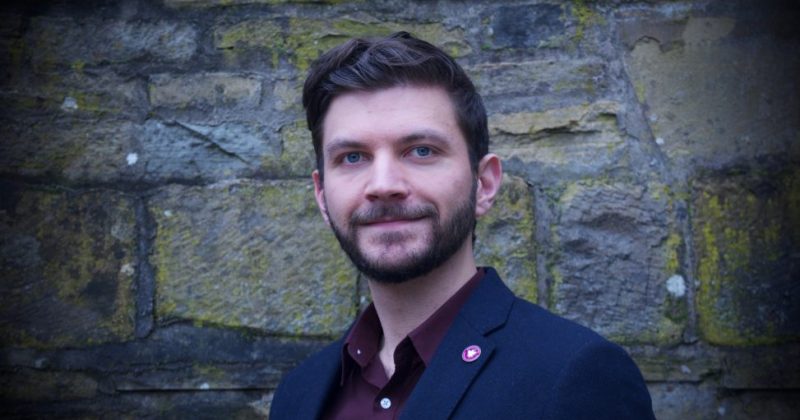
McInerney named Gates Cambridge Scholar
Will McInerney ’11 has been awarded a prestigious Gates Cambridge…
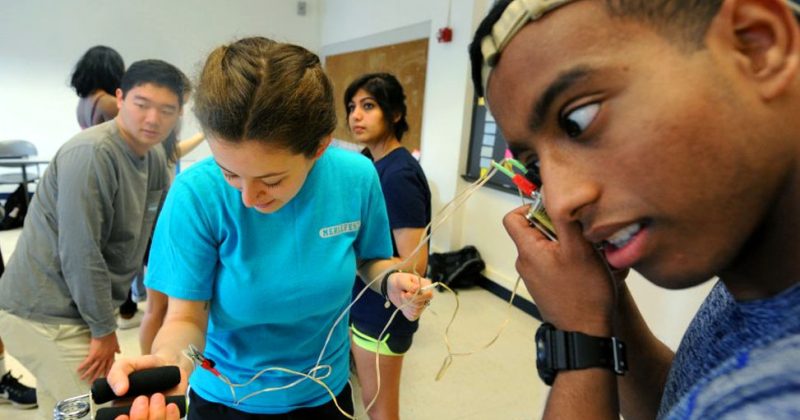
Interdisciplinary neuroscience major makes its debut
The new neuroscience major is housed in the department of…


